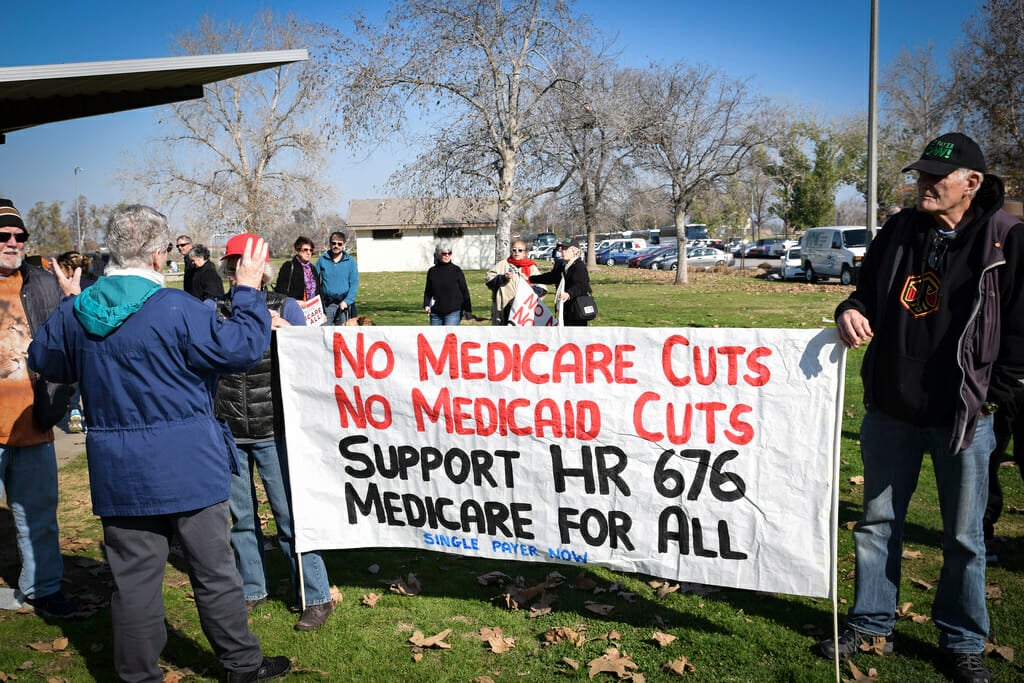Despite what you may have heard, we do have universal healthcare in America—if you are over 65 years old. In the United States, if you are 65 years old or older, have certain qualifying disabilities, or suffer from end-stage renal disease (kidney failure), you qualify for Medicare. But what is Medicare like for those who are eligible? What does Medicare cover? And how does it differ from Medicaid?
As we get older, we spend more on healthcare. Even with the advantages of Medicare, the average senior citizen spends 20 percent of their income on healthcare. Here’s a guide to some of the most frequently asked questions about Medicare, from what the program is to how funding works and who is qualified for coverage today.
What is Medicare?
There are four categories of Medicare. Medicare Part A covers inpatient hospital stays, care in a skilled nursing facility, hospice care, and some health care. Medicare Part B covers certain doctors’ services, outpatient care, medical supplies, and preventative care. Part C is an alternative to parts A and B involving privately administered services called Medicare Advantage. Part D takes care of prescription drug coverage.
With Medicare, you go directly to the doctor or hospital when you think you need care. You do not need to get an authorization. This means that you are never “out of network.”
The out of pocket costs are significantly less for Medicare recipients than for those with other types of insurance. To limit potentially astronomical billing, there are caps on what doctors are allowed to charge under Medicare. Studies have proven that Medicare is also more efficient than private healthcare.

READ MORE:
- What is universal healthcare?
- Here are all the ‘fake news’ sites to watch out for on Facebook
- What every American should know about the Senate Judiciary Committee
- Could Bernie Sanders run—and win—in 2020?
How much does Medicare cost?
No, Medicare is not free. A fixed Medicare premium gives you access to any hospital or doctor that accepts Medicare patients. While there is no Part A premium for most Medicare recipients (because you have paid into the cost through payroll taxes while working), Part B premiums currently cost $134 a month. For reference, this is far less than similar plans under the ACA.
70 percent of people on Medicare pay their Part B premiums entirely through their social security checks. Most people do not see an out of pocket monthly expense. A national “hold harmless” rule ensures that social security checks do no decrease because of Medicare premium increases. Medicare patients with incomes over $85,000 pay higher premiums.
There are Medicare Part A costs associated with hospital stays. These fluctuate based on how much of your deductible has been paid and how many days have been spent in the hospital. For example, hospital stays involve a deductible of $1,340 per benefit period. For the first 60 days of a hospital stay, a patient only needs to worry about paying that deductible. After 60 days in the hospital, there are escalating daily costs for long-term hospital stays.

What is the Medicare Advantage Plan?
Medicare Advantage Plan users may have to pay higher monthly premiums and adhere to the network restrictions. These plans, administered by private insurers, may have more benefits than Part A and B plans, such as vision or dental coverage. They may also offer out-of-pocket maximums and other cost-saving options. Medicare Advantage customers always have the choice to switch back to “Original Medicare” (Parts A & B).
Medicare Advantage, or Part D, covers prescription drugs and is always handled by a private company. There are a variety of plans available under Part D, with varied costs (though the government does have minimum requirements). Part D customers pay a monthly premium and an annual deductible.
What does Medicare cover?
Though Medicare is not free, those who qualify receive assistance aimed at reducing healthcare and prescription drug costs. Medicare also doesn’t cover all the potential needs of its users. There are a number of options for securing coverage for additional care.

Do you have gaps in your coverage or other expenses that Medicare won’t cover? The options for obtaining additional insurance include job-based insurance, retiree insurance provided by employers, Veterans Affairs benefits, and supplemental insurance (Medigap) purchased through a private company.
Medigap is a way that many patients handle the costs of Medicare beyond their premiums. With Medigap coverage, users can get assistance with coinsurance, copayments, and deductibles. Medigap can also assist with special circumstances, such as obtaining healthcare when traveling internationally.
READ MORE:
- 10 important things to know about the House Freedom Caucus
- What is FISA? The surveillance law that’s tearing congress apart
- The number of executive orders by every U.S. president
- What is socialism, really?
Who pays for Medicare?
Medicare is funded by taxpayers or the Social Security Administration. Funding comes primarily from general revenues, payroll tax revenues, premiums, and beneficiaries. Medicare is not perfect, and costs have risen over time. Due to the rising number of retiring Baby Boomers and Republican fondness for austerity measures, Medicare is on pace to run out of money by 2028.
Republicans have made moves to privatize Medicare in recent years, which would certainly result in higher costs and lesser care for many patients. Democrats argue that the only real solution for keeping Medicare alive is raising taxes. If Medicare is to survive in its current form (or improve), a tax increase will be required.

Although Republicans like Rep. Paul Ryan (R-WI) attack Medicare at every opportunity, it remains one of the most popular government programs in the United States.
Progressives, including Sen. Bernie Sanders (I-VT) have championed Medicare for All legislation that would extend this government-administered program to all citizens, not just those over 65. Left-wing organizations like the Democratic Socialists of America and Our Revolution have made Medicare for All a signature issue ahead of the 2018 midterms.
Despite the increasing privatization, rising costs, and looming challenges, Medicare remains incredibly popular. In 2015, Medicare enjoyed a 77 percent satisfaction rate, while only 69 percent of those with insurance through their employer were satisfied. Only 41 percent of the uninsured were satisfied with our healthcare system.
Editor’s note: This article is regularly updated for relevance.


